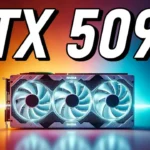Over the past few decades, the software landscape has evolved dramatically. From monolithic architectures that dominated the early days of computing, we’ve transitioned into a realm where distributed systems are not only desirable but often necessary to meet the dynamic needs of modern businesses. As these distributed architectures have proliferated, so too have the complexities associated with building and maintaining them.
This article will shed light on some of the foremost challenges faced by engineers and developers in today’s distributed ecosystem and delve into how prominent protocols such as gRPC vs REST have emerged as solutions to these pressing concerns.

Understanding Distributed Systems
At its core, a distributed system consists of multiple independent computers, or nodes, interconnected through a network, all working in tandem to achieve a common objective. Such a setup leverages the combined processing power and storage capacity of multiple machines, resulting in advantages like enhanced scalability and fault tolerance. In today’s digital era, where global reach and high availability are imperative, distributed systems offer the ability to deliver seamless experiences to users irrespective of their geographical location. They underpin everything from global e-commerce platforms and streaming services to IoT networks and massive multiplayer online games.
Key Challenges in Distributed Systems
However, as powerful and beneficial as distributed systems might be, they are not without their challenges. One of the primary issues encountered is latency. In a world where users expect near-instantaneous responses, even a minor lag in communication between services or data centers can lead to significant user experience degradation. This problem becomes even more pronounced as the system scales, with more nodes and increased network traffic.
Another challenge is ensuring data consistency across the system. With multiple nodes potentially updating and accessing data simultaneously, there’s an inherent risk of data mismatches or conflicts. For instance, if two users attempt to purchase the last item in stock at the same time, the system must be robust enough to handle such conflicts and provide accurate feedback to both users.
How gRPC Addresses These Challenges
Emerging in response to some of these challenges is gRPC, a high-performance, open-source framework developed by Google. gRPC harnesses the power of HTTP/2 for transport, Protocol Buffers as its interface description language, and offers features specifically tailored for distributed systems. One of its standout features is its emphasis on reducing latency. gRPC is designed for low latency and high throughput, ensuring efficient data exchange between services. Its support for bidirectional streaming further enhances this, enabling simultaneous communication between client and server, a boon in scenarios where real-time updates are crucial. Additionally, gRPC’s robust error handling mechanisms provide resilience against system failures, ensuring that services can recover gracefully from unexpected disruptions.
The RESTful Approach to Distributed System Challenges
In contrast to the binary protocols of gRPC, REST (Representational State Transfer) has been the predominant standard for building web services over the past decade. Based on standard HTTP methods, RESTful services are easy to understand and integrate, especially given the ubiquity of HTTP in today’s web ecosystem. This simplicity and broad compatibility have played a significant role in its widespread adoption.
One of REST’s strengths in distributed systems is its stateless nature. Each request from a client to a server contains all the information the server needs to understand and process that request. This ensures that the backend services remain decoupled and can scale independently, a crucial factor for large-scale distributed architectures. Furthermore, REST’s emphasis on standard HTTP methods (GET, POST, PUT, DELETE) ensures a uniform interface, simplifying interactions and making them predictable.
However, there are complexities to consider. The textual nature of JSON or XML used in REST can lead to larger payloads, potentially affecting performance. This is especially true for systems that require frequent or large-scale data exchanges. Moreover, REST does not inherently support real-time bi-directional communication, something applications like chat services or live data updates might need.
Evaluating the Trade-offs: gRPC vs. REST
With two powerful approaches available, the decision between gRPC and REST often boils down to the specific requirements of the project at hand. If performance and low-latency are paramount, especially in an environment with vast amounts of data being exchanged or in systems where real-time communication is crucial, gRPC often comes out on top. Its compact binary payloads, combined with the benefits of HTTP/2, can offer significant advantages in these scenarios.
On the other hand, if you’re developing a service where broad compatibility, simplicity, and ease of integration are priorities, REST has proven its worth time and again. Its stateless nature makes scaling straightforward, and its reliance on standard HTTP methods makes it an excellent choice for public APIs that need to cater to a wide range of clients.
Both gRPC and REST have their strengths and weaknesses, and understanding these can guide developers in making informed choices, ensuring that the chosen approach aligns well with the demands and challenges of their specific distributed system project.
Modern Distributed System Complexities
As technology continues to evolve, so do the intricacies and demands of distributed systems. These complexities arise from factors such as the increasing need for real-time data processing, the rise of IoT devices, and a global user base demanding seamless service. Among these challenges, some stand out as particularly influential:
Scalability: The need to accommodate an ever-growing number of users or devices requires a system that can scale out effectively without sacrificing performance.
Latency: Users around the world expect quick responses, meaning that minimizing the time it takes for data to travel between services is critical.
Fault Tolerance: Given the multifaceted nature of distributed systems, ensuring they remain operational even when some components fail becomes essential.
Data Consistency: With data being processed and stored across multiple nodes, maintaining a consistent and up-to-date dataset is a daunting task.
How gRPC and REST Address These Complexities
Both gRPC and REST were designed with the challenges of distributed systems in mind, but they tackle these challenges in unique ways.
gRPC’s Strengths: Its support for bidirectional streaming caters to real-time data needs, and its use of Protocol Buffers offers a compact and efficient means of data serialization, minimizing latency. Additionally, its inherent support for load balancing and its design around HTTP/2 further aid in handling the demands of scalability and performance.
REST’s Strengths: The stateless nature of REST means that services can be scaled horizontally with ease. Since each request is independent and contains all the necessary information, this reduces the risks associated with data inconsistency. REST’s broad compatibility ensures that it can work with a myriad of clients, making it versatile in the face of diverse user bases and devices.
Emerging Solutions and the Future of Distributed Systems
As technology advances, new solutions and protocols are bound to emerge, further aiding in addressing the ever-growing challenges of distributed systems. Concepts like service meshes, which aim to standardize inter-service communication and ensure resilience, are gaining traction. Similarly, advancements in containerization and orchestration tools, like Kubernetes, play a pivotal role in optimizing service deployment and management.
There’s also a noticeable trend towards multi-protocol approaches, where systems utilize both REST and gRPC based on specific service requirements. This hybrid approach allows systems to capitalize on the strengths of both protocols, ensuring optimal performance and flexibility.
By understanding the specific challenges that modern distributed systems present and evaluating how existing solutions like gRPC and REST address them, developers and architects can make well-informed decisions. This knowledge ensures the creation of robust, efficient, and scalable distributed architectures, prepared to meet the demands of today and adaptable to the needs of tomorrow.
Join 25,000+ smart readers—don’t miss out!








